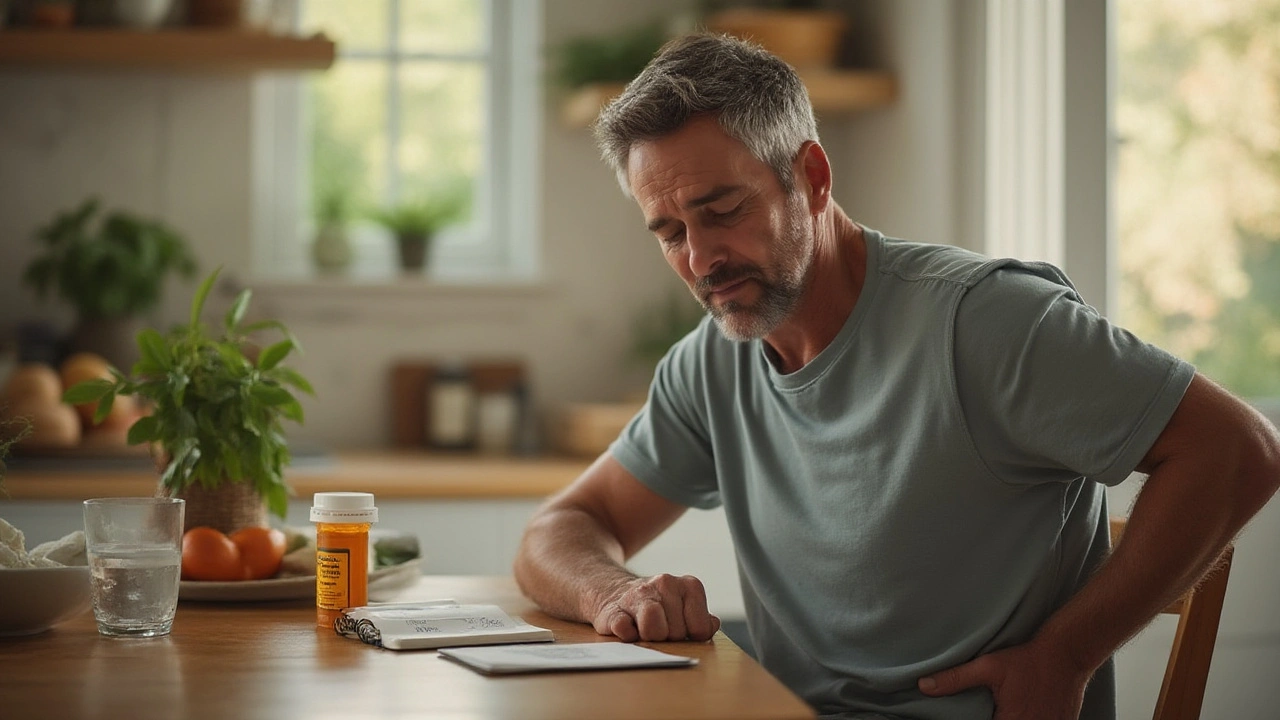GI Upset – Simple Ways to Calm Your Stomach
Everyone gets that uneasy feeling in the gut now and then – nausea, cramping, loose stools, or a burning ache. It can hit after a heavy meal, a bout of stress, or a new medication. The good news is most of the time you can fix it at home with a few smart moves.
Common Triggers and When to Seek Help
Spicy foods, dairy, caffeine, and alcohol are the usual suspects. Infections, antibiotics, and even anxiety can also stir things up. If you notice blood, a fever above 101°F, or symptoms that last more than a few days, call a doctor. Those signs could mean something more serious than simple upset.
Top Articles on Our Site for GI Relief
We’ve written a handful of guides that dive deeper into specific causes and solutions. Check them out for detailed dosing, safety tips, and real‑world advice:
- Meclizine: Dosage, Uses, Side Effects & Tips for Nausea Relief – Learn how this over‑the‑counter drug can calm motion‑sickness and vertigo.
- Cipro Antibiotic: Uses, Side Effects, & Key Facts You Need to Know – Find out why Cipro can cause stomach upset and how to protect your gut.
- Celebrex Uses, Benefits, Side Effects, and Safety Tips – Discover if this pain reliever might worsen digestive symptoms.
- Famotidine Alternatives in 2025: 8 Options That Go Beyond Heartburn Relief – See other meds that help acid reflux without harsh side effects.
- Hepatic Encephalopathy: Why Regular Medical Checkups Matter Most – If liver health is affecting your digestion, this guide explains what to watch for.
Each article breaks down the why and how in plain language, so you can make quick decisions without wading through medical jargon.
Beyond meds, simple lifestyle tweaks can do wonders. Drink clear fluids, stick to bland foods like toast or bananas, and avoid lying down right after eating. Probiotics, ginger tea, or a small amount of peppermint oil can ease cramping for many people.
If you’re taking prescription drugs, double‑check the label for GI side effects. Sometimes adjusting the dose or timing (taking a pill with food instead of on an empty stomach) makes a big difference. Talk to your pharmacist or doctor if you’re unsure.
Stress plays a bigger role than you might think. A quick 5‑minute breathing exercise or a short walk can lower cortisol and calm the gut. Try it the next time you feel a knot forming after a tough meeting.
Remember, most GI upset clears up on its own. Use the tips above, read the related articles for deeper insight, and keep an eye on any warning signs. Your stomach will thank you for the extra care.
-
 VIEW POST
VIEW POSTZocor Side Effects: What to Expect and How to Ease Them
Jul, 26 2025|8 CommentsLearn the most common Zocor (simvastatin) side effects and get timely tips for handling muscle pain, GI upset, and more—without missing your cholesterol goals.